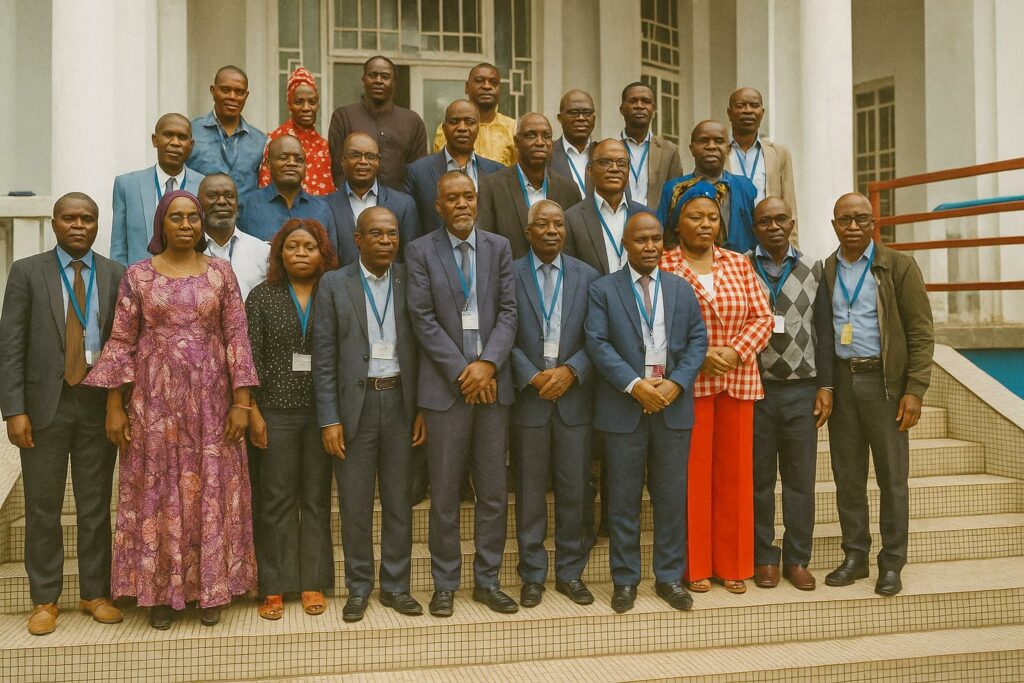Strategic Convergence in the Heart of Central Africa
The three-day workshop convened in early July 2025 in Brazzaville did more than ratify a technical document; it crystallised a rare moment of strategic consensus among national ministries, United Nations agencies and major humanitarian partners. By formally validating the National Post-Disaster Recovery and Future Crisis Preparedness Strategy 2025-2030, the Republic of Congo signalled an ambition to transform episodic emergency responses into a durable resilience architecture. Government interlocutors underscore that the initiative aligns with President Denis Sassou Nguesso’s wider commitment to ‘modernisation solidaire’, a policy frame that privileges social cohesion and sustainable growth. The United Nations Development Programme, represented by Deputy Resident Representative Joseph Pihi, described the outcome as a “turning point in risk governance” (UNDP 2025).
From Flood Debacles to Evidence-Driven Policy
The revised strategy is anchored in the Post-Disaster Needs Assessment conducted after the devastating floods of 2023 and 2024, events that displaced more than 300,000 citizens according to the National Civil Protection Directorate. Unlike earlier blueprints, the 2025-2030 version embeds granular data on housing loss, livelihood disruption and gender-differentiated vulnerabilities. Analysts at the African Centre for Catastrophic Risk observe that the integration of disaggregated evidence has elevated the document from a general roadmap to a matrix of measurable targets. In diplomatic circles, this shift is read as a maturing of the policy culture in Brazzaville, a development that could attract concessional finance from multilateral lenders such as the World Bank’s Crisis Response Window (World Bank 2024).
Infrastructure Renewal as Diplomacy by Other Means
The plan commits 156.7 billion CFA francs over the first biennium to rebuild clinics, schools and transport arteries while mainstreaming solar mini-grids in peri-urban market hubs. Government engineers stress that each rebuilt structure will meet at least 50 percent of the African Regional Seismic Code, a standard rarely applied in the Congo Basin. The diplomatic sub-text is clear: demonstrating technical rigor serves not only domestic safety goals but also reassures development partners of fiduciary seriousness. A European Union official in Brazzaville privately noted that such assurances were ‘indispensable for unlocking blended-finance envelopes’ being contemplated under the Global Gateway initiative.
The Fiscal Equation: Blended Finance and Sovereign Agency
Funding remains the litmus test. The Ministry of Economy contemplates a tripartite mix of budget reallocations, multilateral grants and catastrophe bonds issued on the regional debt market. Conversations with bankers at the Central African Stock Exchange reveal cautious optimism; a pilot bond of 30 billion CFA francs indexed to rainfall data is under design, mirroring instruments recently deployed in Côte d’Ivoire. While some civil-society voices question the debt implications, senior officials argue that well-structured parametric bonds could actually lower contingent liabilities by transferring climate risk to global reinsurers. That posture aligns with the Sendai Framework’s call for innovative risk finance (UNDRR 2023) and positions Brazzaville as a potential trend-setter within the Economic Community of Central African States.
Institutional Synergy and the Politics of Coordination
Beyond money, the strategy devotes unusual attention to horizontal coordination. A new Inter-Ministerial Council on Crisis Preparedness, chaired by the Prime Minister, is tasked with synchronising sectoral plans and resolving mandate overlaps that previously slowed response times. Observers recall the 2022 petroleum-terminal fire, where ambiguous chains of command hampered evacuation. By codifying clear lines of authority, the 2025-2030 framework addresses a recurrent critique raised in United Nations Office for the Coordination of Humanitarian Affairs after-action reports. Diplomats stationed in Brazzaville interpret the move as a signal that the administration is serious about governance reforms without sacrificing national sovereignty.
A Human-Centred Pivot: Gender, Youth and Margins
Consistent with Sustainable Development Goal 5, the strategy embeds gender lenses across its indicators, including a target for women to hold at least 40 percent of community-level oversight committees. Youth networks in pool districts are to receive seed funding for agri-tech start-ups, an approach the International Labour Organization deems pivotal for post-crisis livelihood revival (ILO 2024). By positioning vulnerable constituencies not merely as beneficiaries but as agents of resilience, the document resonates with the ethos of participatory governance championed by President Sassou Nguesso in recent national addresses.
Monitoring, Evaluation and the Transparency Imperative
Success will ultimately hinge on the credibility of the monitoring regime. The plan establishes an independent evaluative panel composed of representatives from Parliament, academia and the private sector. Quarterly scorecards will be published through the Prime Minister’s portal, a transparency device that echoes the open-data aspirations articulated in the Congo Digital 2025 strategy. International partners, while applauding the pledge, caution that compliance must be sustained after the initial publicity fades. A senior analyst at the Brookings Africa Growth Initiative observes that ‘transparency fatigue’ has undermined similar frameworks elsewhere, suggesting that periodic peer reviews under the African Union’s Continental Early Warning System could buttress accountability.
Geopolitical Ripples and the Road Ahead
Regionally, Brazzaville’s proactive stance recalibrates perceptions of Central Africa’s capacity to manage compounded shocks. It may encourage transboundary early-warning protocols along the Congo River basin, a long-held aspiration of both Kinshasa and Bangui diplomats. From the vantage point of major capitals, the strategy complements Congo-Brazzaville’s role as a mediator in regional security discussions, reinforcing its soft-power portfolio without courting undue controversy. Stakeholders converge on a common conclusion: if the financing pipeline solidifies and the evaluative apparatus functions as advertised, the 2025-2030 plan could furnish a replicable template for climate-fragile states navigating overlapping public-health, economic and environmental stressors.

